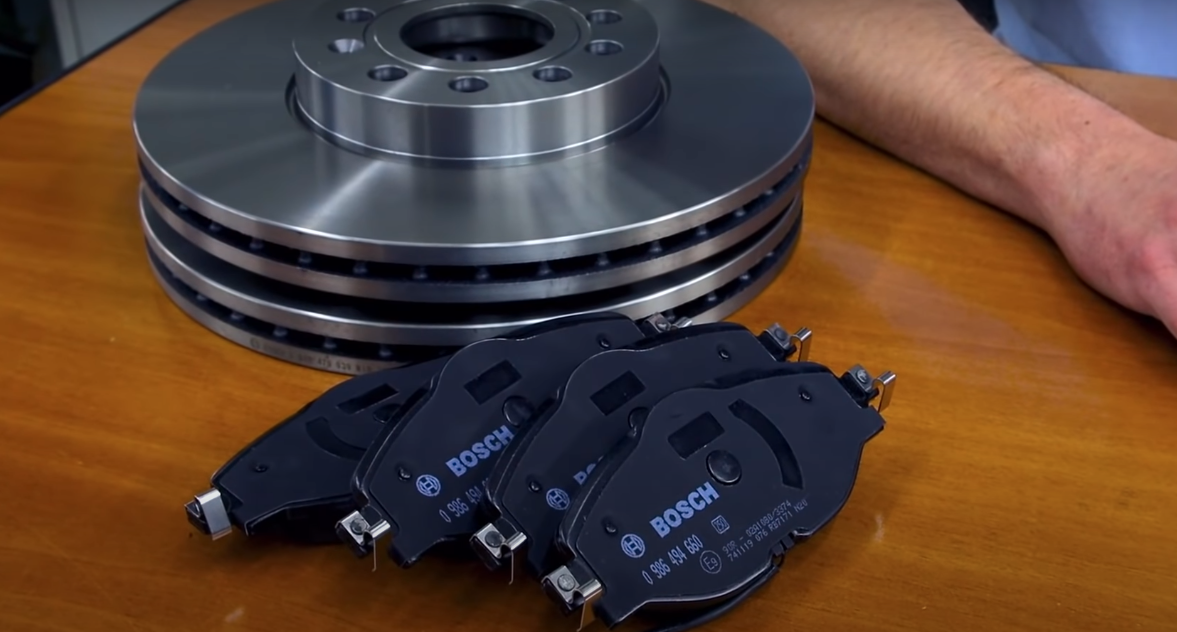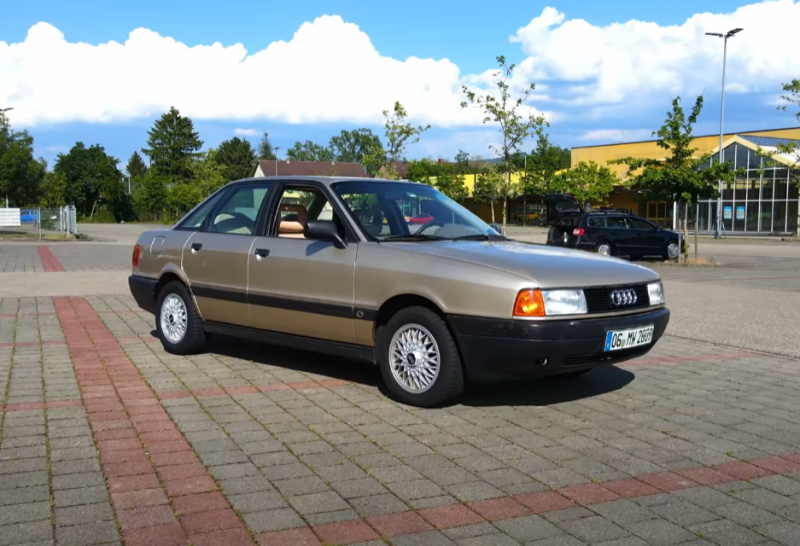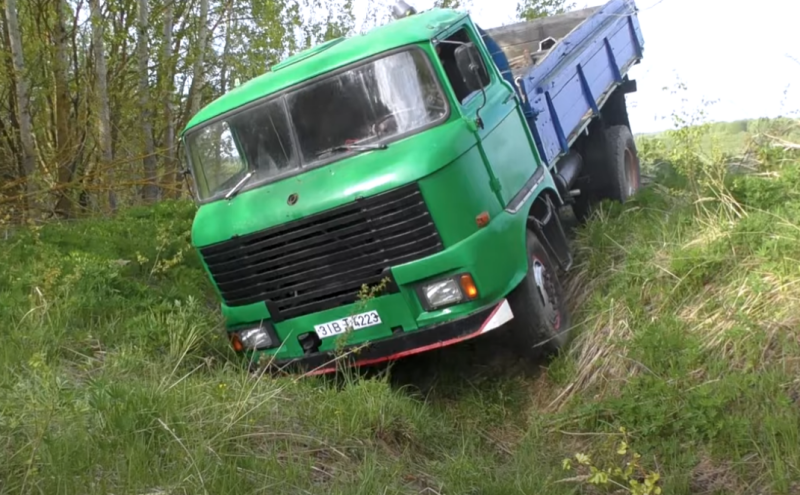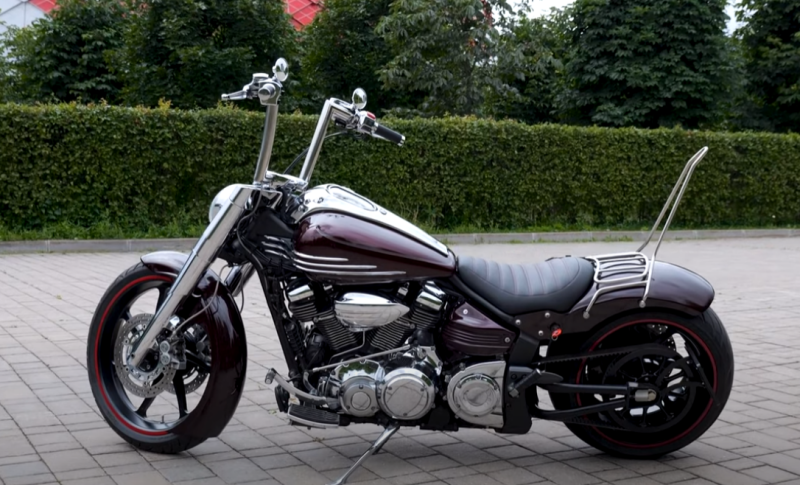Where does the script come from
Unlike grinding, this is the sound that a working brake system can make when the pads are pressed against the disc (drum). At this time, the part vibrates. To get rid of an unpleasant phenomenon, some automakers supply pads with additional pads that dampen vibrations. An easier and cheaper way is to make slots on the surface in contact with the disk. Surely, when buying new parts, many paid attention to these recesses 2-4 mm wide. As a result of such a "modernization", the area of contact with the metal from which the disk is made decreases.
 Brake pads with anti-creak slots for Hyundai Solaris and Kia Rio ORION front. Average price: 1575 rubles. Photo: YandexMarket
Brake pads with anti-creak slots for Hyundai Solaris and Kia Rio ORION front. Average price: 1575 rubles. Photo: YandexMarketIf during an external examination you notice that the slot is almost invisible, it is time to change the pads, because its depth just corresponds to the maximum degree of wear. Risk is an elementary indicator. There are also electrical sensors that give a signal that is displayed on the dashboard.
Yes, the braking efficiency when using a pad with a recess is slightly reduced, but there will be no nasty sound. But there are many other reasons for the appearance of a creak.
Protective layer
Assuming that the pads will be stored in the warehouse for a long time and, perhaps, not in the best conditions before reaching the consumer, manufacturers treat their products with protective compounds, which include impurities that interact with the disc. In this case, the brakes will squeak until the protective coating of the pads is worn off. To speed up the process, accelerate to about 100 km / h and brake sharply. Repeat the procedure a couple of times and it is better on a deserted section of the highway, when there are few cars.
Materials of manufacture
Discs are most often made of cast iron, as for the pads, there are several options: linings can be semi-metallic (half or three quarters) with asbestos, ceramic and even organic. Therefore, when one material of manufacture comes into contact with another, a “conflict” may arise. This happens when the car owner, succumbing to advertising, recommendations from friends, etc., begins to experiment: use pads on the car that are different from those that the manufacturer puts.
 Organic front brake pads for HONDA CIVIC V/VI/VII/VIII 91/95/01/06. Average price for 4 pieces: 1653 rubles. Photo: YandexMarket
Organic front brake pads for HONDA CIVIC V/VI/VII/VIII 91/95/01/06. Average price for 4 pieces: 1653 rubles. Photo: YandexMarketIf you have a budget car, for example, don't shove more expensive organic pads into it in the hope that braking performance will increase dramatically.
Temperature difference
A very common cause of not only the appearance of a squeak, but also cracking of the brake disc. During long trips, the discs, and accordingly the pads, heat up, and if it is cool outside (for example, in the off-season), and on the way there is a puddle into which the wheel falls, the caliper cools sharply.
 Due to sudden cooling, the brake disc may burst. Photo: YouTube/com
Due to sudden cooling, the brake disc may burst. Photo: YouTube/comAs a result, the pads, due to the large number of components included in the lining, can change their physical properties. Or, for example: in the heat you stand in line for a car wash. The brakes get hot, and then fall under a stream of cold water. If, after the above events, a creak appeared, it is unlikely that it will be possible to fix it, except by replacing the pads.
Devices
The brake system consists of more than just pads and discs. Any contacting parts of the mechanism can creak: even the pedal itself or the stem in the vacuum booster.
 The pedal itself and the mechanisms associated with it can creak. Photo: YouTube/com
The pedal itself and the mechanisms associated with it can creak. Photo: YouTube/comIt is better to look for the source of noise together in a car with a muffled engine. One regularly presses the pedal, the second is looking for the "culprit" of the squeak. You can fix it with grease.
Grinding brakes
An even more unpleasant sound, which may indicate wear of parts of the brake system or their poor quality. The reasons for the appearance of a rattle, which is more dangerous than a creak, deserve special attention.
Export
Its indicators are installed on most modern cars. If we take the simplest design, then this is a metal bracket that begins to touch the disc at a certain wear of the pad. As a result, a “signal” rattle occurs, requiring immediate replacement of the worn part. For some time, you can still ride with this sound: the indicator informs you in advance about the problem with the block. But with the replacement it is better not to delay.
 A metal tab attached to the pad is the simplest acoustic wear indicator. Photo: YouTube/com
A metal tab attached to the pad is the simplest acoustic wear indicator. Photo: YouTube/comIf you continue to drive with such a rattle, the problem will spread to the brake disc, which will begin to develop its resource at an accelerated pace. And this part costs much more pads. In addition, as the disc wears out, it gradually becomes thinner, which means that it becomes more sensitive to overheating and sudden changes in temperature. In the latter case, having entered a puddle after a long trip, you run the risk of leaving it already with a broken brake disc. A less dangerous consequence is the deformation of the part.
 Blue and black stripes on the disc are formed after prolonged braking (for example, on the descent) and getting into a cold puddle. Photo: YouTube/com
Blue and black stripes on the disc are formed after prolonged braking (for example, on the descent) and getting into a cold puddle. Photo: YouTube/comIn this case, the bent disc will contact the block unevenly, which can also cause not only a rattle, but also a beating of the steering wheel when you press the pedal to stop abruptly.
The presence of foreign elements in the system
The design of the brakes (not drum brakes) is obvious in the truest sense of the word: the pads and the parts attached nearby can be observed through the holes in the rim. Therefore, the elements of the caliper are practically not protected by anything, except for the rear casing. When driving on bad roads, you can easily “catch” a small pebble that will get stuck between the guide pads and the brake disc. If the rattle does not disappear after a while, you should carefully inspect the brakes to remove the cause of the unpleasant sound.
Wedging caliper parts
Moving parts may not work correctly during operation. The reasons are very different: the installation of low-quality spare parts, deformation, etc. In this case, after releasing the brake pedal, the rattle may not disappear immediately, but may continue for several more seconds. It is worth thinking about the coordinated work of the parts of the brake system in the case when you notice: set at the same time, for example, the front pads wear out unevenly (the left one is much faster than the right one or vice versa). Only a thorough diagnosis in a car service will help here.
 New pad and worn out: the slot is not visible. Photo: YouTube/com
New pad and worn out: the slot is not visible. Photo: YouTube/comAnother reason for the rattle can be eliminated on its own. This is grazing the dustproof rear cover on the brake disc. Such a nuisance can occur due to severe wear of the part or after hitting an obstacle or rough unprofessional repair of the suspension, brakes, etc.
 This is what an extremely worn out brake shield might look like. Photo: YouTube/com
This is what an extremely worn out brake shield might look like. Photo: YouTube/comA folded shroud will constantly scrape across the disc. A hammer and a setting will help out here, with the help of which the parts are given their original shape.
Marriage and counterfeit
If the brakes began to squeal (rather than squeak) immediately after installation, the reason most likely lies in the fake pads (disc). Marriage is much less common even among branded manufacturers. There is only one way out - to remove the counterfeit and put the normal parts.
Afterword
In most cases, a creak warns the car owner about problems that have already begun and are coming. Therefore, not paying attention to a sound that is not particularly disturbing (yet) is at least short-sighted. But a rough rattle suggests that something needs to be done immediately so as not to “run into” the purchase of expensive spare parts or not get into an accident.










